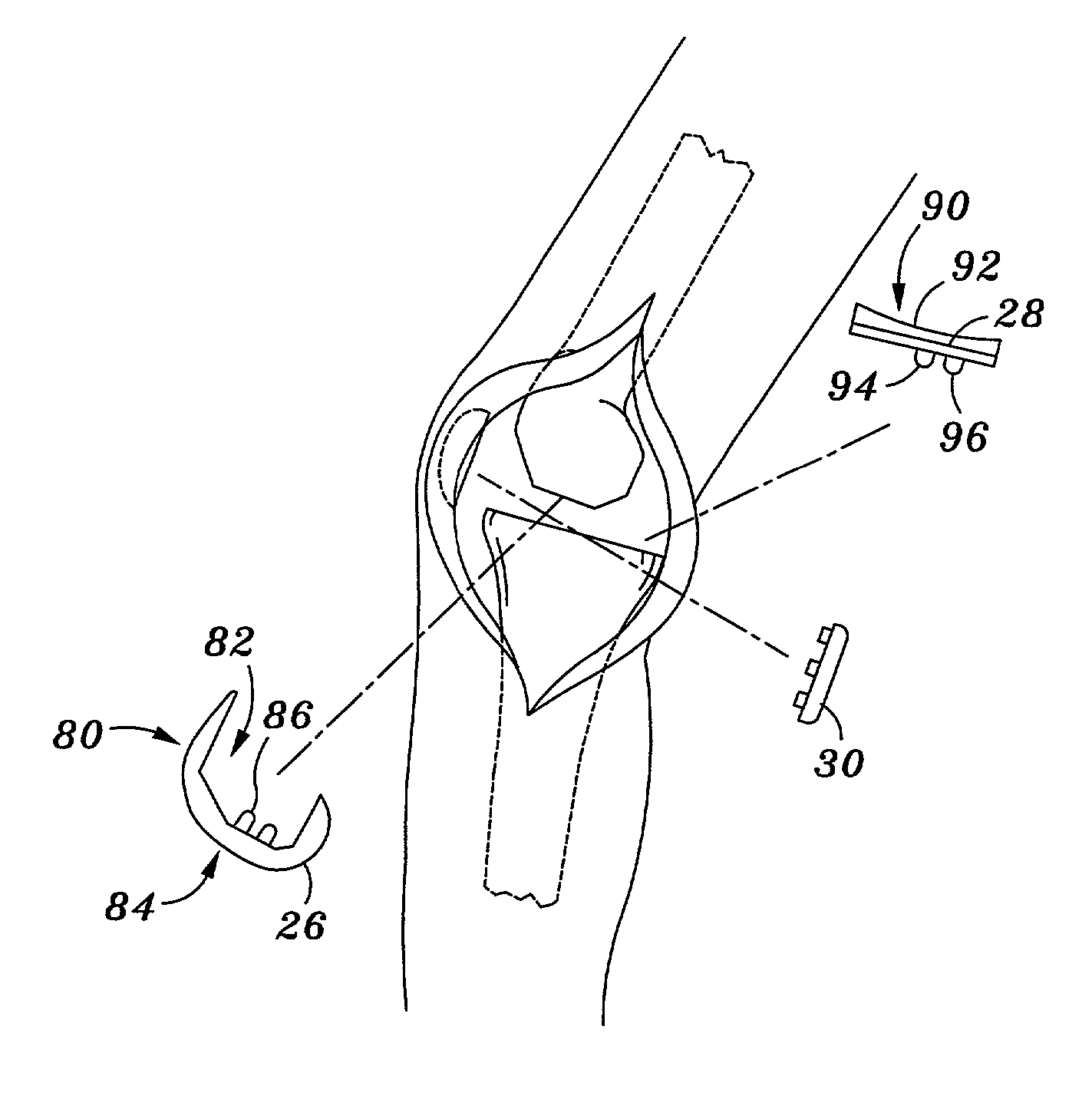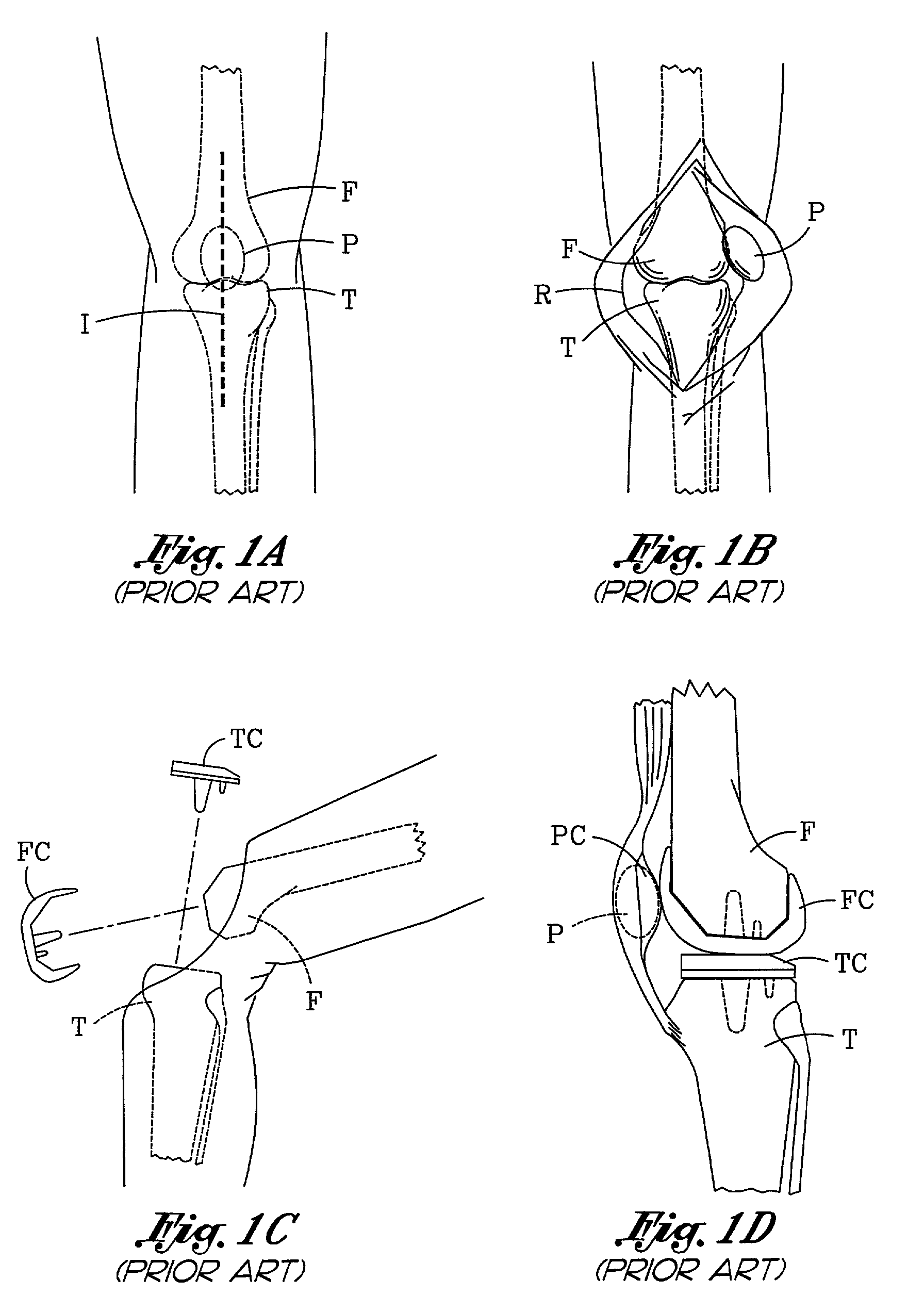Method and apparatus for minimally invasive knee arthroplasty
a knee arthroplasty and minimally invasive technology, applied in the field of total knee arthroplasty, can solve the problems of pain, stiffness and swelling, permanent cartilage deterioration, excessive deterioration of knee cartilage, etc., and achieve the effect of minimizing the profile of the component, minimizing the length of the peg, and low profil
- Summary
- Abstract
- Description
- Claims
- Application Information
AI Technical Summary
Benefits of technology
Problems solved by technology
Method used
Image
Examples
Embodiment Construction
[0058]The invention is a method and apparatus for total knee arthroplasty. In the following description, numerous specific details are set forth in order to provide a more thorough description of the present invention. It will be apparent, however, to one skilled in the art, that the present invention may be practiced without these specific details. In other instances, well-known features have not been described in detail so as not to obscure the invention.
[0059]One embodiment of the invention is a method for total knee replacement which is minimally invasive. Referring to FIG. 2, in accordance with the method, an incision I is made either generally medially or laterally along the mid-lateral line of the knee. By “generally” medially or laterally, it is contemplated that the incision I may be somewhat anterior or posterior to the mid-lateral line. So located, the incision I is generally centered over the tibio-femoral or “knee” joint. In a preferred embodiment, the incision I is abo...
PUM
 Login to View More
Login to View More Abstract
Description
Claims
Application Information
 Login to View More
Login to View More - R&D
- Intellectual Property
- Life Sciences
- Materials
- Tech Scout
- Unparalleled Data Quality
- Higher Quality Content
- 60% Fewer Hallucinations
Browse by: Latest US Patents, China's latest patents, Technical Efficacy Thesaurus, Application Domain, Technology Topic, Popular Technical Reports.
© 2025 PatSnap. All rights reserved.Legal|Privacy policy|Modern Slavery Act Transparency Statement|Sitemap|About US| Contact US: help@patsnap.com



